
New Personal Record: 13h48m Moon
Posted: 2 January 2014
Prior to opening the observatory on Wednesday, 1 January 2014, I wanted to try for the nearly 14 hour old moon. My previous record was a 17h57m moon on 10 February 2013. As sunset approached, I set up the D7000 DSLR with 70-300mm lens and the Cometron 12x70 binoculars, both on tripods:
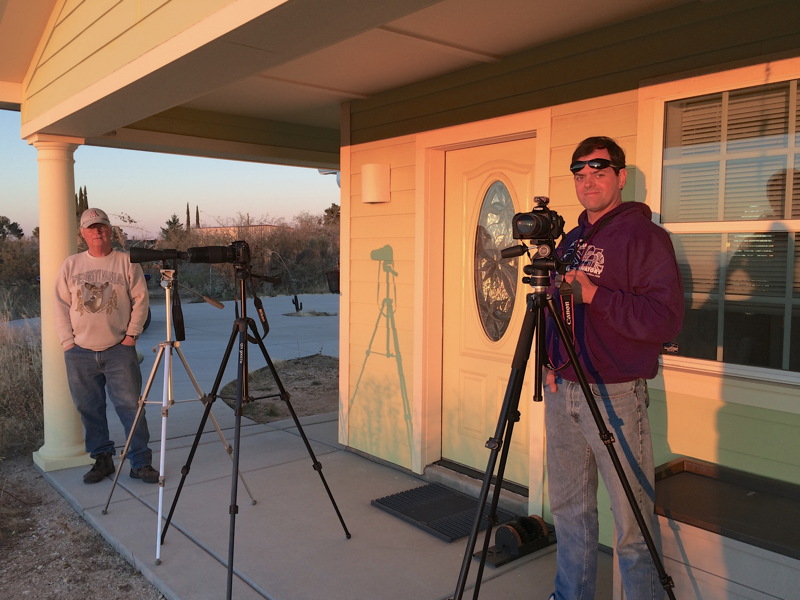
I was joined by Rob Sparks (The Half-Astrophysicist Blog; Twitter: @halfastro; right) and Jim Cadien (left).
While searching for the very thin crescent moon, I moved the 12x70 binoculars to Venus. Its thin crescent was clearly visible in the binoculars.
At 1800 MST, Rob reported that he had located the young moon using his 8x42 binoculars. At 1802 MST, I picked it up in the 12x70 binoculars. With the new moon occurring at 1114 UT (0414 MST), my observation occurred with the moon only 13 hours 48 minutes old. A new record for me (and Rob and Jim as well). Our DSLRs were clicking away! Rob posted his photos on Flickr. Check them out. Here are mine:
1 January 2014, 1803 MST
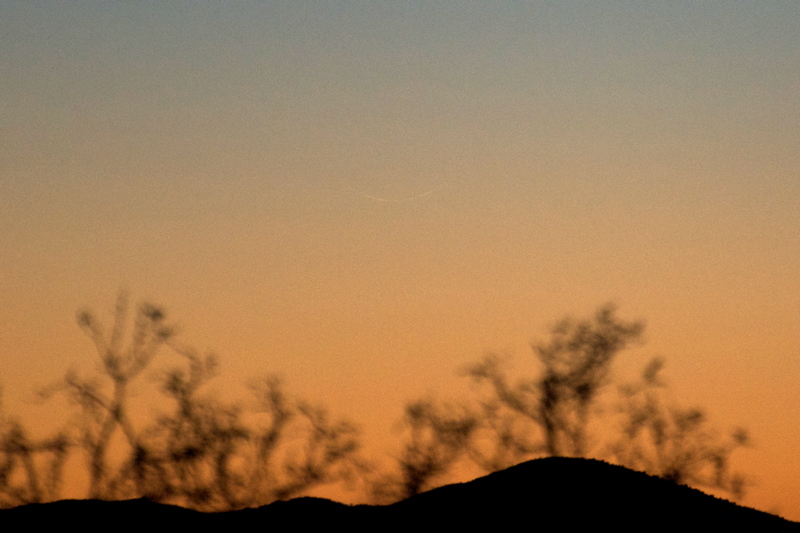
Mouseover or tap to see arrow showing moon's location
This photograph shows Venus at the upper left and the thin crescent moon faintly visible at the lower right:
1 January 2014, 1808 MST
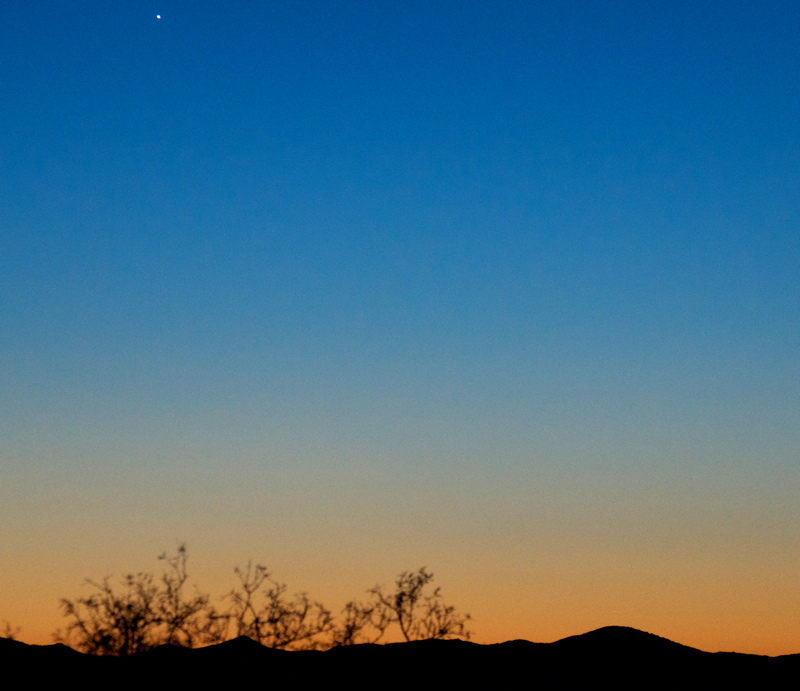
Mouseover or tap to see arrow showing moon's location
This image sequence shows the moon setting and was taken from 1807 MST to 1810 MST. Mouseover or tap the individual images to see the arrows.
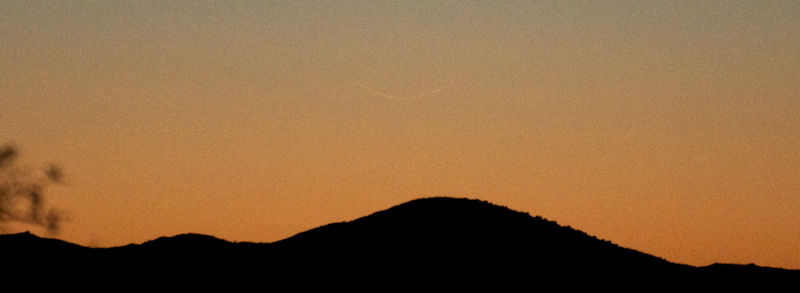
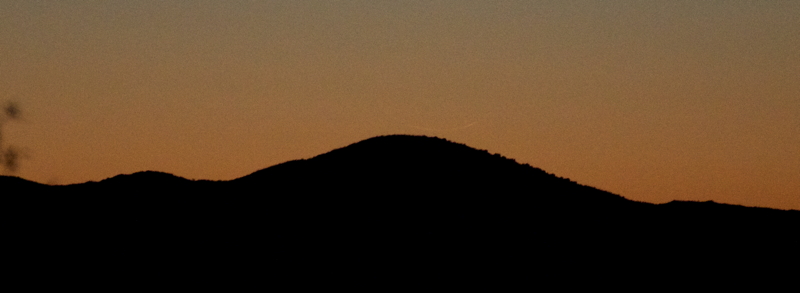
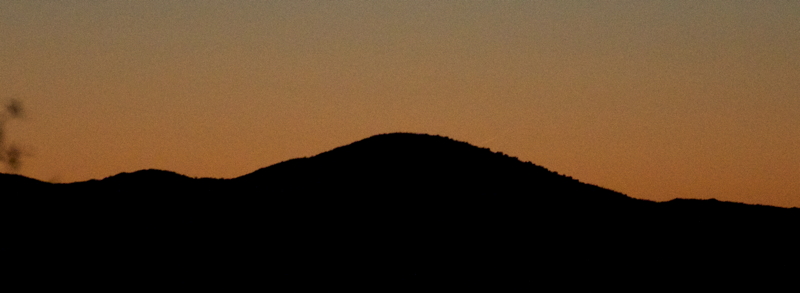
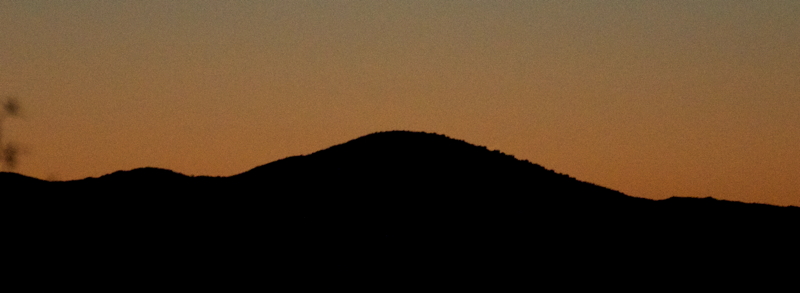
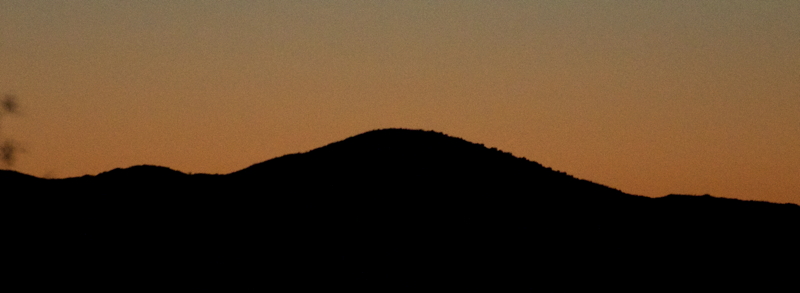
We observed the moon right up until the very thin crescent disappeared behind distant mountains. It was exciting to see this very challenging object.
|
Opened: Wednesday, 1 January 2014, 1823 MST Temperature: 53°F |
Session: 639 Conditions: Clear, calm |
Jim left us after the moon set at 1813 MST. Rob and I went to the observatory. We first observed Venus, 83X, very low in the western sky. Still showed a nice crescent. We also viewed NGC157 (galaxy), 83X. Rob then did some wide-angle sky photography to capture the Zodiacal Light and Milky Way. At 1920 MST, we began setting up Rob's camera for prime focus imaging at the 8" LX200-ACF. The first target was NGC157. He got to practice the manual guiding that I use for my DSO astrophotography. Rob also did astrophotography through the 8" of M1 (Crab Nebula) and M42 (Great Orion Nebula). We then observed Jupiter, the four Galilean Moons, and the Great Red Spot at 83X, 222X, and 444X. Seeing wasn't quite good enough for 444X.
Rob left at 2052 MST.
I then did some observing of Jupiter, 222X, at 2106 MST. The Great Red Spot was about to cross the central meridian.
Next, I did some software beta testing, which was completed at 2214 MST.
Breezes were now getting more frequent and stronger. At 2221 MST, slewed to NGC4236 (galaxy), low in the northeastern sky. It was faintly visible, but large (22'), nearly filling the 2" 24mm UWA (83X) field-of-view. I plan to image it on a future session.
I next viewed M44 (Praesepe, open cluster), 83X. Nice view, with lots of stars visible.
I then began closing up for the night.
|
Closed: Wednesday, 1 January 2014, 2248 MST Temperature: 51°F |
|
Comments are welcome using Email. Thanks.
Cassiopeia Observatory Home Page